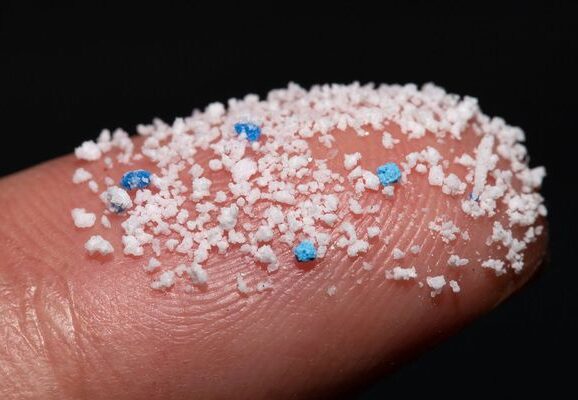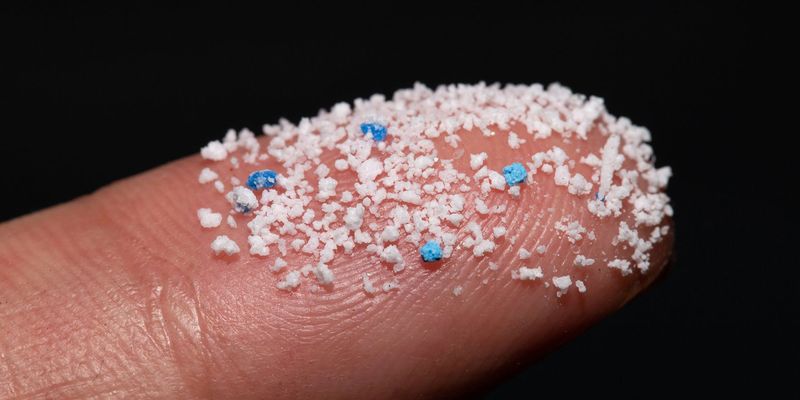
In an age where plastic pollution is a well-known environmental issue, a more insidious problem is emerging: microplastics are infiltrating our bodies. Imagine tiny fragments of plastic, invisible to the naked eye, taking up residence in our organs. The question isn’t just how they got there, but what they’re doing once they arrive. Recent studies have uncovered alarming levels of microplastics in human organs, revealing a new frontier in the battle against pollution and its impact on our health.
Table of contents
- Microplastics in the Brain: The Unexpected Discovery
- Lungs and Respiratory Health: Breathing in Plastic
- The Impact on the Liver and Kidneys: Internal Filtration Systems
- Microplastics in Reproductive Organs: A Fertility Concern
- The Path to Prevention: Reducing Microplastic Exposure
- Conclusion: The Urgency of Addressing Microplastic Pollution
The Silent Invaders: Microplastics in Human Organs
An Unseen Threat
Microplastics, tiny particles resulting from the breakdown of larger plastic items, have been detected in various human organs. This discovery, initially shocking, underscores a growing concern: these pollutants aren’t just a problem for the environment but are becoming a personal health issue. Researchers have found microplastics in the brain, lungs, liver, kidneys, and even reproductive organs. This article delves into where these particles accumulate, their potential effects, and what we can do to protect ourselves.
1. Microplastics in the Brain: The Unexpected Discovery
A Troubling Revelation
Recent studies have revealed that the brain might be one of the most microplastic-contaminated organs. Matthew Campen, a lead researcher on one such study, described the levels of plastic found in the brain as “alarming.” The brain, vital for cognition and overall health, now appears to be a major repository for these pollutants. The implications of this finding are profound, suggesting that microplastics could interfere with brain function, potentially contributing to neurodegenerative diseases.
2. Lungs and Respiratory Health: Breathing in Plastic
Infiltration Through Air
Microplastics aren’t only a concern for our brains; they’ve also been detected in lung tissue. Given that we breathe in air containing these particles, it’s no surprise they’re showing up in our lungs. The presence of microplastics in this critical organ could lead to respiratory issues, from inflammation to long-term damage. This section explores how inhaled microplastics might contribute to chronic respiratory conditions and what this means for public health.

3. The Impact on the Liver and Kidneys: Internal Filtration Systems
Critical Organs at Risk
Our liver and kidneys play essential roles in filtering toxins from the blood. The discovery of microplastics in these organs raises concerns about their ability to perform these functions effectively. As these organs work to filter out pollutants, the accumulation of microplastics could lead to oxidative stress, inflammation, and impaired function. This section examines the potential long-term effects on liver and kidney health and how it could affect overall wellbeing.
4. Microplastics in Reproductive Organs: A Fertility Concern
The Unseen Threat to Reproduction
Emerging research has also identified microplastics in reproductive organs, raising alarms about their impact on fertility. The presence of these pollutants in both male and female reproductive systems could disrupt endocrine function and fertility. This section discusses the potential implications for reproductive health, highlighting the need for further research into how microplastics might affect conception and pregnancy.

5. The Path to Prevention: Reducing Microplastic Exposure
Taking Action Against Pollution
As the evidence mounts, researchers are calling for urgent measures to reduce microplastic exposure. Simple lifestyle changes, such as avoiding the use of plastics in food preparation and minimizing consumption of processed meats, can make a difference. Additionally, there is a growing push for stricter regulations on plastic use and more robust research into alternative materials. This final section provides practical tips for reducing personal exposure to microplastics and advocates for broader policy changes to combat plastic pollution.
Conclusion: The Urgency of Addressing Microplastic Pollution
The discovery of microplastics in crucial human organs is more than a scientific curiosity; it’s a public health crisis that demands immediate attention. As we continue to grapple with the environmental impact of plastic pollution, it’s clear that our own bodies are not immune to its effects. By taking steps to reduce exposure and advocating for stronger regulations, we can begin to mitigate the risks posed by these invisible pollutants. The time to act is now—our health depends on it.
As we uncover the hidden dangers of microplastics in our organs, it’s clear that our bodies are facing more challenges than ever before. But microplastics aren’t the only issue affecting our health—digestive discomfort, such as bloating, is another common concern that many of us struggle with daily. If you’ve been experiencing frequent bloating and want to learn more about what might be causing it and how to find relief, check out our comprehensive guide on understanding and managing bloating. Discover the factors that could be contributing to your discomfort and take the first steps toward feeling better.